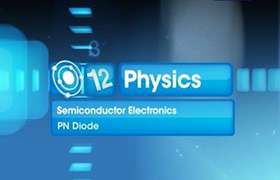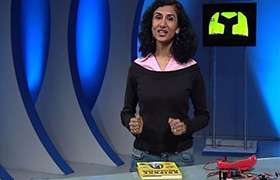CBSE Class 12-science Answered
What is the direction of the diffusion current in the PN Junction ( n-type to p-type or p-type to n-type )?
Please explain the reason also.
Asked by damarlasumanjali | 23 Jul, 2015, 10:16: AM
A pn junction is formed when a p-type semiconductor is fused with a n-type semiconductor.
On one side of the junction, p-type carriers, i.e. holes are in a majority and on the other side, n-type carriers, i.e. electrons are in a majority.
Due to this difference, the holes from p side move to the n side and the electrons from n side move to the p side causing a current to develop in the semiconductor called the diffusion current.
Hence, one can say that the direction of diffusion current is from n-type to p-type as well as from p-type to n-type.
Answered by Romal Bhansali | 24 Jul, 2015, 11:18: AM
Concept Videos
CBSE 12-science - Physics
Asked by kabirnarwal0 | 13 Jan, 2024, 01:49: PM
CBSE 12-science - Physics
Asked by jagadeviteli1983 | 06 Sep, 2020, 10:27: AM
CBSE 12-science - Physics
Asked by kajalkumari2k15 | 30 Nov, 2019, 11:14: AM
CBSE 12-science - Physics
Asked by Topperlearning User | 18 Jun, 2014, 10:42: AM
CBSE 12-science - Physics
Asked by Topperlearning User | 18 Jun, 2014, 10:48: AM
CBSE 12-science - Physics
Asked by Topperlearning User | 18 Jun, 2014, 10:52: AM
CBSE 12-science - Physics
Asked by Topperlearning User | 18 Jun, 2014, 11:05: AM
CBSE 12-science - Physics
Asked by Topperlearning User | 18 Jun, 2014, 11:15: AM
CBSE 12-science - Physics
Asked by Topperlearning User | 18 Jun, 2014, 11:21: AM
CBSE 12-science - Physics
Asked by Topperlearning User | 04 Jun, 2014, 01:23: PM




